If there is one thing that is most representative of the breed it is the disparity and variety of colors. There are so many different coats that it would close to impossible put a number on all of them. Despite this it is easy to see individuals with highlights and reflections of different tones that not one of us can agree on.
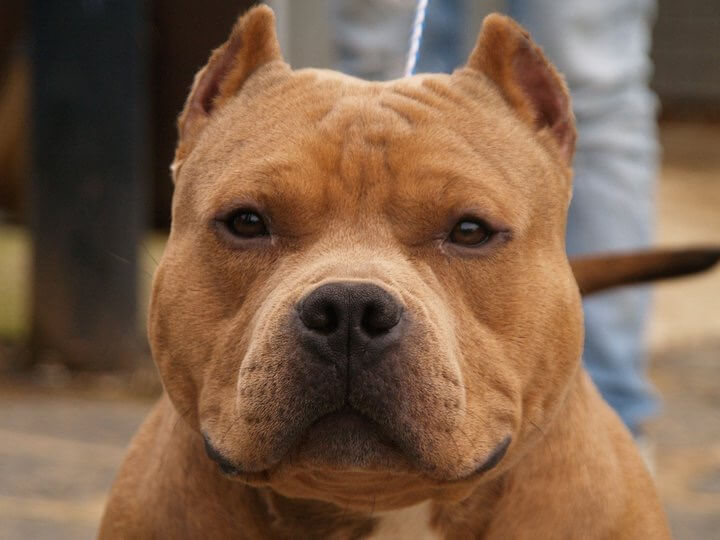
Before we dig into this topic I would like to explain a bit more about coats. First, to be clear is that everything in the end is a question of pigmentation (eye, eyelid, and nose color) and that each coat is associated with its own color and pigment.
If we had to trace the roots of the different colors, we would have more or less to align a few groups. Within those groups we would find the different nuances and tones that one could find.
For the American Bully the groups would be the following:
- Fawn
- Red nose family
- Striped (non-brindle)
- Tricolor (take into account that they can be in all the groups)
- Solid color dogs or dogs combined with white fawn
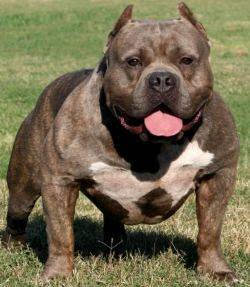
Fawn:
This is a coat whose tones would be commonly called caramel colored or brown with all its tones.
This we would understand that fawn ( a light brown), red ( not the red nose red), or whichever other type of brown tone in respect to the pigmentationwould fit into this category in order to distinguish between fawn and blue fawn. Fawn dogs are common and usually have a black nose with eyes and eyelids very noticeably pigmented. On a few occasions it is easy to see an individual dog (even more in dogs of a strong tone) a type of ‘mascara’ and honey or dark colored eyes.
Blue fawn dogs, on the contrary, have a light brown tone and usually have blue under-lights that create a brilliant blue shine. This trait presented, for example in the American Staffordshire Terrier is not desireable. In respects to the American Bully, it is one of the most common coats and shows up as a blue tone and always light colored eyes. Some solid color dogs also present a type of mascara but it is much lighter in color and gives off a more cold look. It is very common that ‘fawns ‘in all of their tones are combined with white.
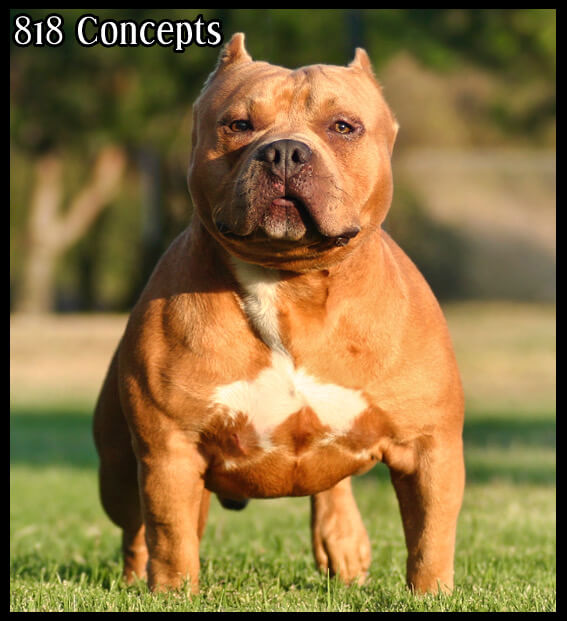
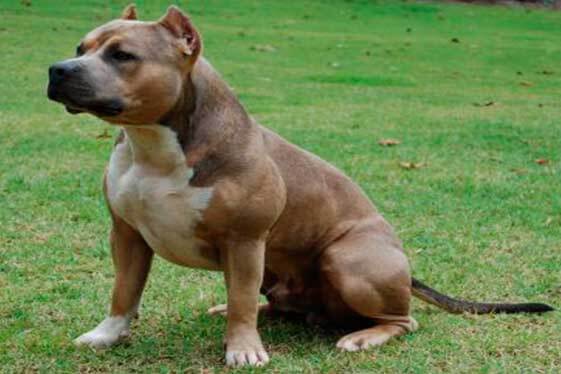
Red nose family
The red nose, as everyone knows, comes from APBT heritage. They are dogs whose pigmentation make up a family and without a doubt they are the only ones with this peculiar aspect.
They are dogs whose own coat is almost a champagne color (considering that some would not agree to put them in this group). In a more darker shade they have a soft chocolate tone.
Like I mentioned their peculiarity (I know what separates other dos from dogs with similar coats like the fawn) would be their pigmentation, their nose, and eyelids are always the same tone as the coat. Their eyes can go from amber to yellow and it is easy for blue tones to appear with those dogs that are lighter within the champagne family.
They are dogs that despite their peculiarity in pigmentation do not present mascara. It is very simple that they present the same white heritage as other coats (even though it is not very common that white spots or ‘toupees’ on the head). Ultimately they are a type of extended breed of the tricolor (they are called tri-choco). It is easy to see in individual dogs their red nose heritage with the particular ‘striped coat.
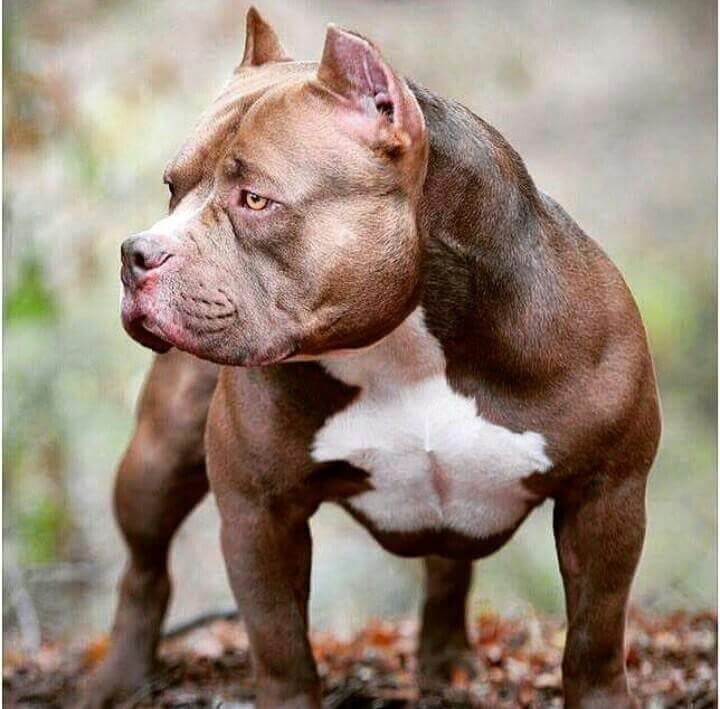
Striped (non-brindle)
The striped or tabby coat is one of the most native in the dog world. Its heritage comes form our friends from old bread that hold onto bravery and ferocity. Said solid genes is what provoke its prevalence when crosses are made and is easily shows up in litters that in theory you wouldn’t expect it to. Within the Bully there exists almost all tones of striped coats (including the coat that is know as the reverse response).
A striped dog always has a coat that is solid or with white that goes from very light brown (fawn) to dark tons with very fine little rays of darker tones in a similar patter to that of a tiger.
In the peculiar ‘reverse’ coat we can find dogs whose rays are more of a nuance found in the base coat of the dog.
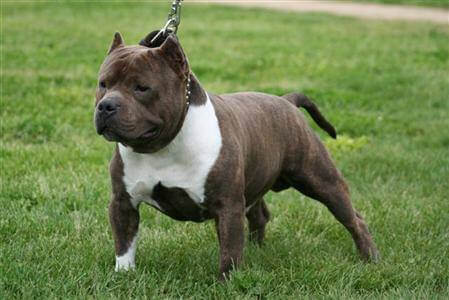
It is in this group that the chocolate variety or the red nose stripes are shown in the animal as a brown color as well.
The tricolor donor can give small nuances with striped dogs even though the form is not very common because this coat is more prevalent than the others.
Solid color or solid combined with white
If there is one thing that has made the Bully popular, aside from solid colors and the previously described coats, it has to be the color blue. An outcast color in the predecessor breeds of ours counter to what made it popular. The blue coat as it is is more than just a variety of the color black in our dogs. This color is very rooted in out breed of dog. Like I mentioned before, it is an identifying sign of its origins despite, that it has lost predominance and interest as the years go by.
The dogs with a predominantly black color have been present in the breed, especially in the Gotty line (now that we see dogs like new Trojan and other primitive Gotty dogs). Considering that they are not that appreciated in the breed for who they are, if they are dogs that are known normally for their coat combined with white dogs are considerably spectacular.
All white dogs or dogs that are a majority white are also very typical and are included in the majority of the Gottyline dogs. Here it is important to clarify that when we talk about white dogs we are talking about dogs that are perfectly pigmented and that are not albino (not considering that within the standard of to be this is a disease), genetically white dogs and black doges are determined the same way and it is very common that they are born one from another.
As a norm whichever coat that is accepted in the American Bully breed with the exception of merle and albino because of they way they are they are considered abnormalities in the genetics within the breed. Moreover merle and albino associated with various illnesses.
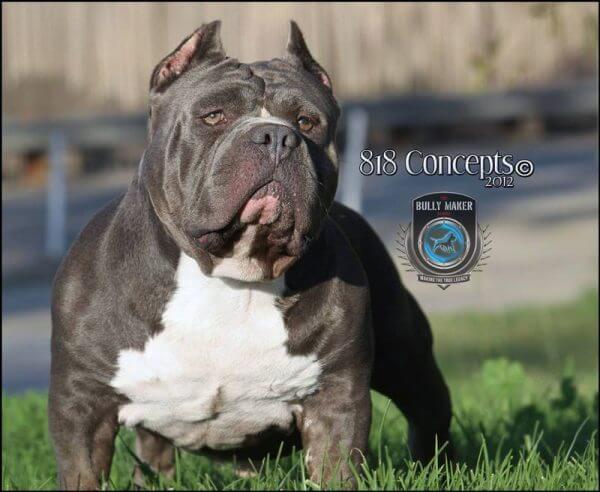
Tricolor dogs
If we are talking about a coat in concrete within the tricolor group it is nearly impossible because the color combinations are close to infinite as it is present in all of the coats which make it difficult to define this group as its own family. This group is more like the patron of all the colors.
One is to suppose that the combinations of tricolors come from dogs that go way back in the blood line. We must take into consideration that the ‘boom’ has only happened within the last few years. Lilac, tri-choco, blue/tan, red/tan, like I said the results are infinite. Up until recently they were considered weird, as they were relatively very uncommon. They were not sought after they just simply came out of the litters. The gene that determines the tri pattern is a recessive gene so both parents that should carry those genes so that one of their puppies will be tri. In order to be considered a tri-color the dog should have a minimum The same goes for the tricolor’s that should have a minimum proportions because it is not enough to simply have present three different colors.
Now that we have explained the different colored coats in general, it is important to remember that the bully’s coat should be short and rough. Dogs with long fur or curly fur are not accepted. Also, if you are thinking about getting a pedigree or even if you are considering breeding do not let the color be a determining factor. At times we can be very idealistic and want a specific color or pattern. Be reasonable and always look at their health, ‘standard’, structure, and temperament. These are the most important factors and the factors that determine the quality of the pedigree.
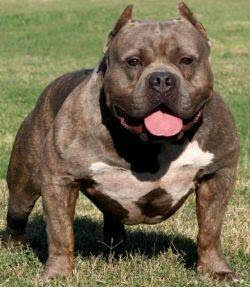
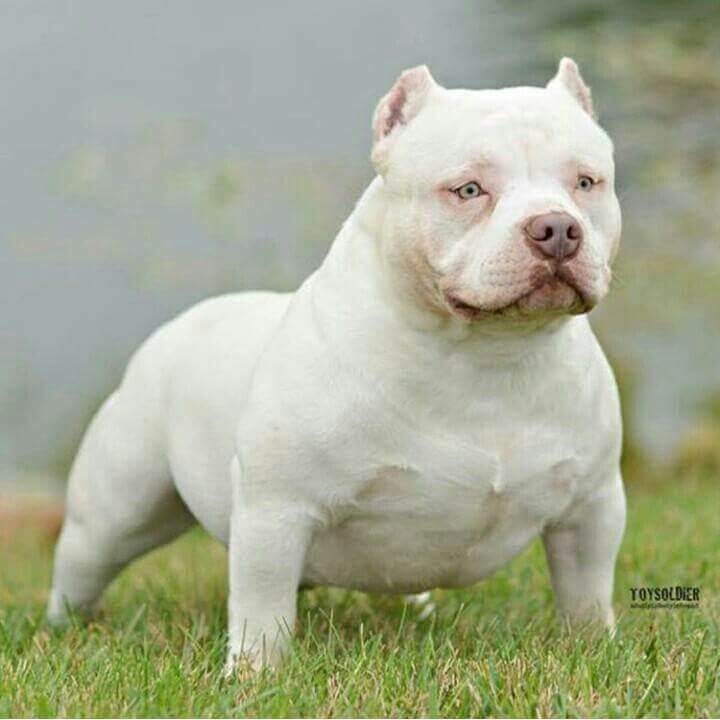
 BullysTvShow Portal especializado en el mundo American Bully
BullysTvShow Portal especializado en el mundo American Bully

